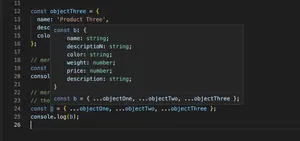Introduction
TypeScript elevates JavaScript to new heights, offering static typing and powerful abstractions. Among its features, Generics and Intersection Types are the linchpins for creating robust and reusable code. Let’s dive into the mechanics and art of utilizing these compelling TypeScript features.
Understanding Generics
Generics provide a way to create reusable components by abstracting types. Think of them as the variables of types – placeholders that allow you to write functions, interfaces, and classes that work with any data type without losing type information.
Example: Here’s a simple generic function that returns whatever is passed to it:
function identity<T>(arg: T): T {
return arg;
}
The <T> syntax declares a generic that the function can use. This makes the function flexible, yet type-safe.
More Complex Generics
Advanced Generic Function: Let’s build a function that takes an array and a function, and applies the function to each element of the array.
function applyToEach<T, U>(arr: T[], func: (arg: T) => U): U[] {
return arr.map(func);
}
This utilizes two generics, T and U, representing the types of the array’s elements and the return type of the function, respectively.
Constraints on Generics
Sometimes, you want your generics to follow certain rules or have properties you can access. Constraints let you specify the requirements a generic must meet.
Constrained Generic Function:
function getProperty<T, K extends keyof T>(obj: T, key: K) {
return obj[key];
}
Here, K is constrained to be a key of T, providing access to property names.
Intersection Types
Intersection Types allow you to combine multiple types into one. They’re great for mixing compatible types or adding additional functionality to existing types.
Simple Intersection: Combining two object types.
type FirstType = {
id: number;
}
type SecondType = {
name: string;
}
type CombinedType = FirstType & SecondType;
A CombinedType instance will have both id and name properties.
Advanced Intersection Types
Intersections aren’t limited to objects. You can intersect functions, arrays, and even other generics.
Function Intersection: Creating a callable type with additional properties.
type Loggable<T> = T & { log: (msg: string) => void };
function createLoggable<T extends Function>(func: T): Loggable<T> {
return Object.assign(func, {
log: (msg: string) => { console.log(msg); }
});
}
Now, your functions can have a log method.
Generics with Intersection Types
Bring the power of Generics and Intersection Types together for complex, composable types.
Example: An intersection with a generic constraint.
function merge<T extends object, U extends object>(obj1: T, obj2: U): T & U {
return { ...obj1, ...obj2 };
}
Use Cases and Patterns
Generics and Intersection Types shine in high-reuse scenarios, such as utility functions, data handling, and framework development. For instance, a generic data fetcher with type-specific parsers, or component prop types in a React application.
Limitations and Gotchas
No feature is without its caveats. Beware of overly complex types that can become hard to read or maintain. Moreover, not all types combine neatly into intersections; understanding the nuances of your type structures is paramount.
Conclusion
This guide scratched the surface of TypeScript’s Generics and Intersection Types, showcasing their adaptability and strength. Mastering these constructs equips you with the tools to craft code that’s both scalable and maintainable, all while preserving the intricacies of your data shapes.
